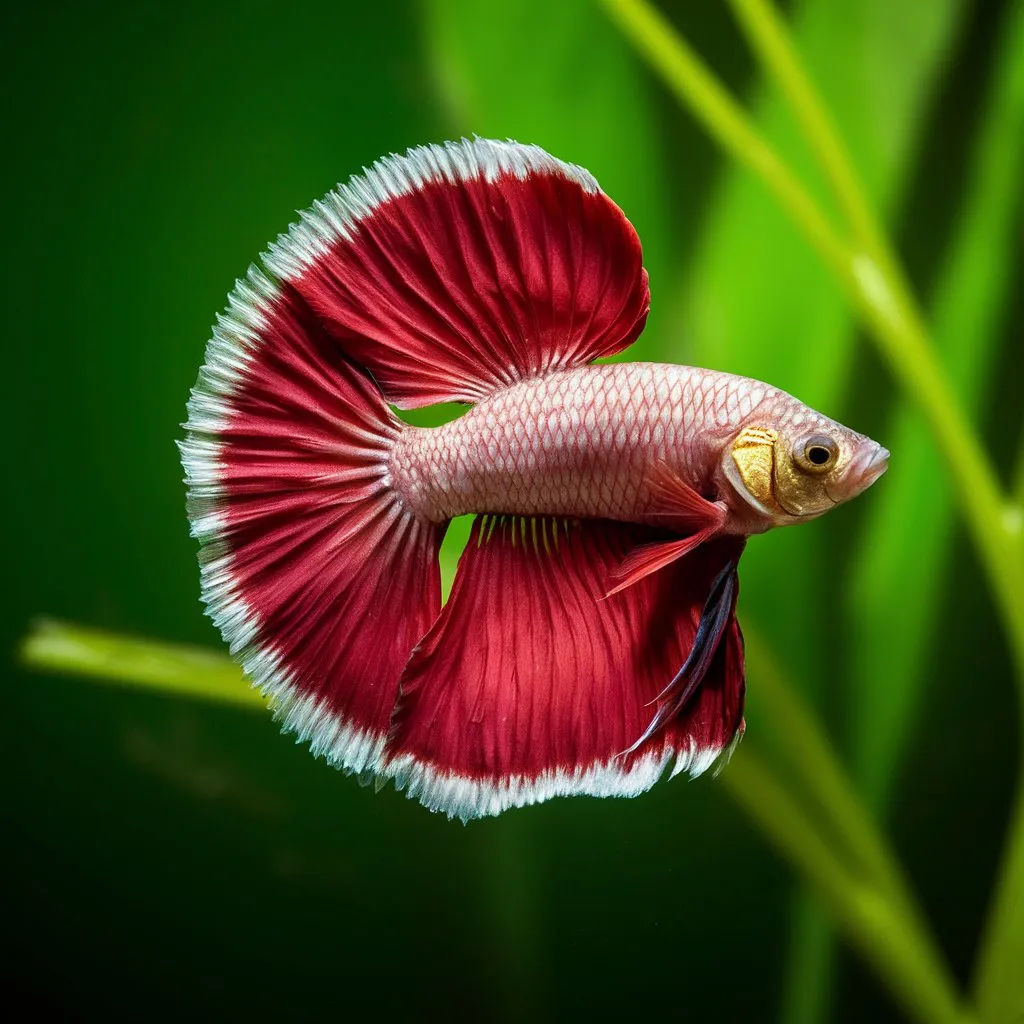Betta fish, also known as Siamese fighting fish, are popular aquarium inhabitants known for their vibrant colors and unique personalities. As with any pet, however, betta fish can be susceptible to a variety of health issues. In this comprehensive guide, we will explore the most common betta fish diseases, their causes, symptoms, and effective treatment methods to help you maintain the health and well-being of your beloved underwater companions. In this article, Betta Fish 247 will explore how many betta fish diseases?
Fin and Tail Rot
Fin and tail rot are among the most prevalent betta fish diseases. These conditions are characterized by the gradual deterioration and discoloration of the fins and tail, often due to bacterial or fungal infections. Symptoms may include ragged, frayed, or discolored fins, as well as a loss of appetite and lethargy.
Causes of Fin and Tail Rot
- Poor water quality: Ammonia, nitrite, and nitrate buildup in the aquarium can contribute to the development of fin and tail rot.
- Stress: Stressful environmental conditions, such as overcrowding, aggressive tank mates, or sudden changes in water parameters, can weaken the fish’s immune system and make them more susceptible to infections.
- Injury: Damaged fins and tails can provide an entry point for harmful bacteria and fungi.
Treatment for Fin and Tail Rot
- Improve water quality: Perform partial water changes, test and maintain optimal water parameters, and consider using a water conditioner to remove harmful chemicals.
- Treat with antibiotics or antifungal medications: Depending on the underlying cause, your veterinarian or experienced aquarist may recommend specific medications to combat the infection.
- Provide stress-reducing environment: Ensure the tank is appropriately sized, has proper hiding spots, and is free from aggressive tank mates.
Ich (White Spot Disease)
Ich, also known as white spot disease, is a common parasitic infection that can affect betta fish. It is characterized by the appearance of small, white spots on the fish’s body, fins, and gills.
Causes of Ich
- Introduction of new fish: Ich can be introduced to an aquarium through the addition of new fish that may be carrying the parasite.
- Stress: As with fin and tail rot, stressful environmental conditions can weaken the fish’s immune system and make them more susceptible to ich.
Treatment for Ich
- Increase water temperature: Raising the water temperature to 82-86°F (28-30°C) can help kill the parasitic life stages.
- Use an ich-specific medication: There are several effective over-the-counter medications designed to treat ich in aquarium fish.
- Perform regular water changes: Removing waste and uneaten food can help reduce the parasite’s population.
Dropsy
Dropsy is a serious and often fatal betta fish disease characterized by the swelling of the body, protruding scales, and pinecone-like appearance.
Causes of Dropsy
- Bacterial infection: Dropsy is typically caused by a bacterial infection, which can be exacerbated by poor water quality or a weakened immune system.
- Organ failure: In some cases, dropsy may be a symptom of organ failure, such as kidney or liver problems.
Treatment for Dropsy
- Improve water quality: Perform frequent water changes and test for and address any water parameter issues.
- Treat with antibiotics: Your veterinarian or experienced aquarist may recommend a specific antibiotic treatment to combat the underlying bacterial infection.
- Provide supportive care: Ensure the fish has access to clean, well-oxygenated water and a stress-free environment.
What Are Some Preventive Measures For Betta Fish Diseases?
Here are some key preventive measures for keeping betta fish healthy and avoiding diseases:
Proper Tank Setup and Maintenance :
- Use a small tank (2.5-5 gallons) with a filter and perform regular partial water changes (25-50%) weekly.
- Maintain stable water parameters – temperature (78-82°F), pH (6.5-7.5), and ammonia/nitrite/nitrate levels.
- Avoid overcrowding and provide hiding places.
High-Quality Diet :
- Feed a varied diet of high-quality betta pellets, freeze-dried foods, and occasional live/frozen foods.
- Avoid overfeeding, which can lead to digestive issues.
Disease Prevention :
- Quarantine new fish before adding them to the main tank.
- Disinfect equipment between uses to prevent cross-contamination.
- Monitor for signs of disease and treat promptly if observed.
Stress Reduction :
- Minimize tank disturbances, loud noises, and bright lights.
- Provide a calm, peaceful environment.
Water Quality and Cycling :
- Establish a stable nitrogen cycle in the tank before adding fish.
- Use a water conditioner to remove chlorine and heavy metals.
- Perform partial water changes regularly to maintain water quality.
Proper Acclimatization :
- Slowly acclimate new fish to the tank water to avoid shocking them.
- Float the bag and add small amounts of tank water over time.
By following these best practices, you can help prevent common betta fish diseases and keep your betta healthy and thriving.

Conclution Betta Fish Diseases
Remember, early detection and proper treatment are crucial for the successful management of betta fish diseases. Regularly monitoring your betta’s health, maintaining optimal water quality, and seeking the advice of a veterinarian or experienced aquarist can go a long way in keeping your finned friend healthy and thriving.

Related Posts
Female Betta Care: A Comprehensive Guide
Understanding Betta Fish Water
What Are Clamped Fins On Betta?